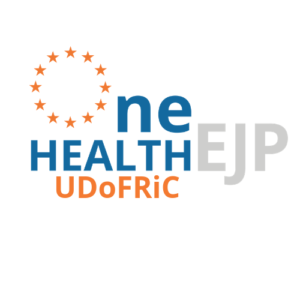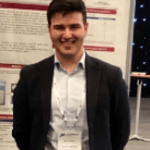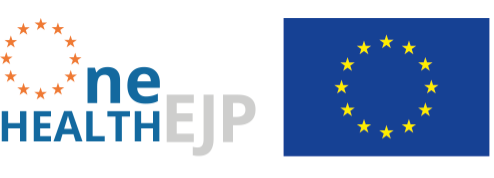University of Warwick Interchange, Coventry, West Midlands, United Kingdom
14 Rue Pierre et Marie Curie, Paris 5e Arrondissement, Île-de-France, France
Addlestone, England, United Kingdom

The Project #UDOFRIC
| Start: | March 2020 |
| Duration: 3 Years | |
| Domain: | Antimicrobial Resistance, Foodborne Zoonoses |
| Members: | APHA- UK, ANSES- France |
| Contact: | John Rodgers (APHA) |
UDoFRiC: Understanding the development of fluoroquinolone (FQ) resistance in Campylobacter present in broilers and the risks of FQ resistance persisting through the food-chain to cause disease in people
Since 2005, Campylobacter has been the most commonly reported gastrointestinal bacterial pathogen for people (campylobacteriosis), with an EU notification rate of 64.8 per 100,000 population in 2017. Campylobacter jejuni and C. coli accounted for 99.7% of these cases with the former linked to the majority of incidents. Across Europe, antimicrobial resistance monitoring in clinical Campylobacter isolates has reported an increasing and high levels of ciprofloxacin resistance across member states. Ciprofloxacin is an antibiotic of the fluoroquinolone class and is regarded as critically important by the World Health Organisation and therefore this increase is a major public health concern. Campylobacter originating from poultry are considered a main source of campylobacteriosis in people. Monitoring of antimicrobial resistance of Campylobacter isolated from broiler chicken flocks and broiler products has demonstrated elevated levels of ciprofloxacin resistance which could be considered a source of the resistant isolates recovered from clinical cases. Over the past 20 years, studies of Campylobacter from clinical cases in the UK have indicated increases in ciprofloxacin resistance from 7% in 1995, 38% in 2008 and 47% in 2017 (44% in C. jejuni species alone). In UK broiler flocks monitoring has indicated ciprofloxacin resistance in C. jejuni has increased from 18% in 2008, to 41% in 2016. In France, similar increases in ciprofloxacin resistance have been noted from broiler flocks and clinical cases from 1999 onwards.
The use of ciprofloxacin in broiler flocks has been linked to development of resistance in Campylobacter that can persist after use has ceased and is potentially a source of resistance in human campylobacteriosis. In the EU, a ban routine use of feed supplemented with antibiotics (growth promoters) was implemented by 2006, but therapeutic use of fluoroquinolones (FQ) poultry remains an option. In the UK, figures for FQ use in broilers (2012-2017), report an increase to a peak of 2% in 2014 and has since declined to 0.3% in 2017. The decline in the use of FQ in the poultry industry, was driven by concerns increasing FQ resistance rates in Campylobacter in broilers and people. Reviews of the literature that FQ resistance can persist in reservoirs following the end of selective pressure, for example it is not clear if resistance has declined in the United States following a ban on FQ use in poultry. Widespread acquisition of FQ resistance in chicken associated Campylobacter has been reported in the UK and evidence for clonal expansion of resistant lineages, suggesting that resistance may come at little fitness cost or even offer a selective advantage in some scenarios. Experimental studies indicate that costs/benefits associated with resistance can be variable.
This PhD project has utilised Campylobacter isolates from the APHA archives and associated information (phenotypic, genomic, epidemiological meta-data) from surveillance and research across the food chain to investigate temporal trends in the development and diversity of FQ resistance in UK broiler flocks. This project has conducted in vitro and in vivo competition trials between closely related FQ-resistant and FQ-susceptible isolates; to determine if FQ resistance leads to increased survival, growth, or colonisation. The findings from this project will provide information to policymakers to help make more informed decisions to curb the increasing levels of FQ resistance in Campylobacter in the chicken broiler industry.
Project Assets
Oral presentation at International Society for Animal Hygiene’s annual 20th annual congress in Berlin. 5-7th Oct 2022.
Oral presentation – 180 second thesis at Journées Scientifiques et Doctorales de l’Anses (JSDA), Saint Malo, France. 18-19 Oct 2022.
Poster presentation at Warwick Medical School PGR Symposium, Warwick University, UK. 22nd June 2022.
Hanford, T., McCarthy, N., Kempf, I., Rivoal, K., Cawthraw, S., Anjum, M., Abu Oun, M., & Rogers, J. (2022). Identifying key characteristics in Fluoroquinolone Resistant Campylobacter throughout the production chain. Poster presentation at One Health EJP ASM, Orvieto, Italy. 11-13th April 2022. Abstract available here.
3-minute thesis presentation & roundtable discussion at One Health EJP ASM, Orvieto, Italy. 11-13th April 2022.
Poster presentation at Warwick Medical School PGR Symposium, Warwick University. UK. 26th May 2021.
Poster presentation & 3-minute thesis presentation at One Health EJP ASM, hybrid event. 9-10th June 2021.
Poster presentation at Warwick Medical School PGR Symposium, Warwick University, UK. 30th Sept 2020.
3-minute thesis, One Health EJP ASM 2020, online. 27-29th May 2020.

Taylor Hanford


